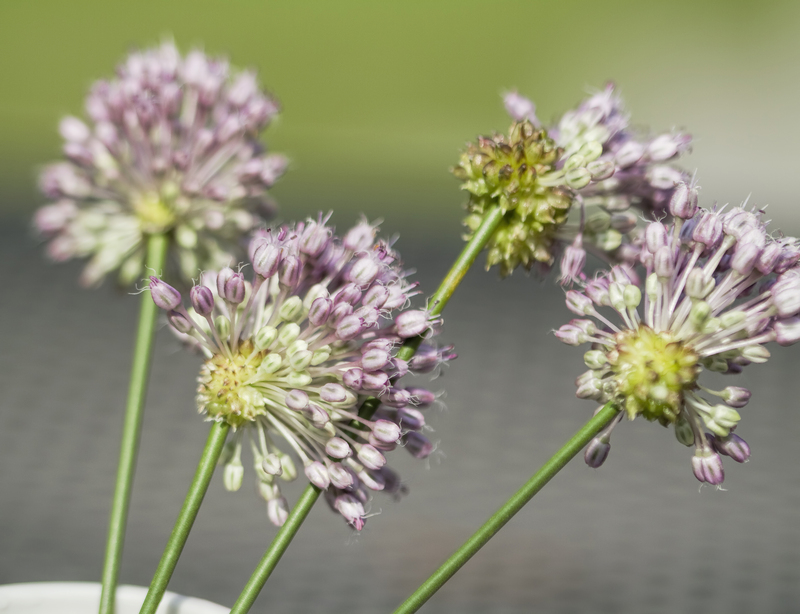Roots Of Change: Gardening And Environmental Impact
Posted on 02/09/2025
Roots Of Change: Gardening And Environmental Impact
Gardening has long been a cherished pastime, hobby, and in many cases, a vital source of food and beauty in our everyday lives. In recent years, its significance has expanded beyond backyard aesthetics, evolving into a powerful tool for environmental change. By examining the roots of change through gardening, we can better understand how our daily practices shape the world's sustainable future.
The Intertwined Connection Between Gardening and Environmental Impact
Gardening is much more than the cultivation of plants. It is an intricate process that directly affects soil health, biodiversity, climate, and urban living. As cities grow larger and wild spaces become increasingly scarce, gardening for the environment has acquired a renewed relevance. This connection can be broken down into several key areas:
- Soil quality and erosion prevention
- Support for biodiversity and pollinators
- Air quality improvement
- Carbon sequestration and climate regulation
- Sustainable food production
Soil Health and Sustainability
Healthy soil forms the foundation of any thriving garden ecosystem. Sustainable gardening practices enrich soil fertility, reduce dependence on chemical fertilizers, and combat issues like erosion. These benefits are essential for both local and global environmental wellbeing.
How Gardening Helps Soil:
- Mulching and composting: By adding organic matter, gardeners improve soil nutrient content and structure.
- Alternate planting (crop rotation): Reduces the risk of soil depletion and breaks cycles of pests and diseases.
- Reduced tillage: Maintains soil integrity and boosts its capacity to absorb and retain water.
Gardening for Biodiversity
Encouraging a diverse ecosystem right in your own yard stands as one of the strongest arguments for environmental gardening. By cultivating native plants and providing habitats, backyard gardeners can create sanctuaries for a wide variety of beneficial insects, birds, and pollinators.
- Attracting Pollinators: A diverse selection of flowering plants helps sustain bees, butterflies, and other pollinating species crucial for many food crops.
- Supporting Wildlife: Native shrubs and trees offer shelter and nutrition for birds and small mammals.
- Combating Invasive Species: Native gardens help crowd out invasive plant species that threaten local ecosystems.
Urban Gardening and Air Quality
Increasing greenery in urban environments -- from rooftop gardens to community plots -- significantly enhances air quality. Plants absorb pollutants such as nitrogen dioxide, carbon monoxide, and ozone, serving as natural air filters.
Some environmental gardening projects in cities introduce plants specifically selected for their capacity to filter toxins and absorb carbon. Urban trees and green walls further help in reducing the urban heat island effect, cooling city streets during hot summer months.

Gardening: A Key Player in Climate Action
When discussing the roots of change, it's impossible to ignore the crucial part that gardens play in mitigating climate change. Gardens act as micro carbon sinks, helping to sequester atmospheric CO2 and reduce overall greenhouse gas emissions.
Gardening and Carbon Sequestration
While large-scale forests are known for absorbing carbon, even a small garden can lock away surprising amounts of carbon over time. Utilizing perennial plants, trees, and sustainable practices increases the capacity for climate-friendly gardening.
- Mulching: Organic mulches boost soil organic carbon.
- Composting: Converts yard and kitchen waste into rich soil, reducing methane emissions from landfills.
- No-dig gardening: Minimizes disturbance and helps store carbon in plant roots and soil layers.
Sustainable Food Production and the Local Movement
Growing your own fruits and vegetables can drastically reduce your environmental footprint. Locally grown food eliminates transportation emissions and lessens the need for single-use plastics and packaging. This shift towards eco-conscious gardening creates a ripple effect, encouraging communities to adopt more sustainable habits.
- Less food miles: Home gardens and community plots cut down on the transport needed to bring food to your table.
- Organic methods: Reducing or eliminating pesticides and synthetic fertilizers protects water sources and wildlife.
- Seasonal eating: Encourages seasonal diets, reducing the demand for out-of-season produce sourced from far away.
The Benefits of Native and Drought-resilient Gardens
A dramatic aspect of environmental impact gardening lies in the shift to native and drought-resistant landscaping. Selecting plants suited to the local climate dramatically reduces water usage, pesticide requirements, and maintenance efforts, creating a sustainable, resilient garden.
Why Choose Native Plants?
- Low Maintenance: Native species are adapted to local soil, weather, and pests.
- Water Efficiency: Native and drought-tolerant plants need much less watering than ornamentals.
- Biodiversity Boost: They support native insects, birds, and animals, promoting balanced ecosystems.
Gardening with native species is a simple but powerful environmental practice that anyone can adopt to restore eco-systems and encourage regional wildlife.
Reducing Chemical Use: Toward Organic Gardening
Traditional gardening often relies heavily on synthetic fertilizers, pesticides, and herbicides, each of which can have harmful impacts on the environment. Organic gardening offers a way forward, utilizing natural inputs and processes to create healthy, resilient gardens.
- Composting: Recycles organic waste into soil enhancer.
- Natural Pest Control: Attract predatory insects or use neem oil and soap sprays instead of synthetic pesticides.
- Soil Amendments: Use manure, bone meal, and green manure crops to nourish soil.
By reducing reliance on chemicals, eco-friendly gardeners keep water supplies cleaner, protect local wildlife, and foster long-term garden health.
Water Conservation in Environmental Gardening
With freshwater resources under threat worldwide, gardeners have a critical role in sustainable water management. Techniques like rainwater harvesting, drip irrigation, and xeriscaping not only keep gardens lush but also use significantly less water.
- Rain barrels: Collect and store rainwater for garden use.
- Drip irrigation: Delivers moisture directly to roots, minimizing waste.
- Xeriscaping: Focuses on drought-tolerant plants and water-efficient design.
When paired with mindful watering and mulching, these practices exemplify how smart gardening can lessen our impact on crucial water sources.
Community Gardens: Collective Roots of Change
Community gardening movements are sparking real change in urban and suburban areas alike. By banding together, neighbors transform vacant lots into green spaces teeming with life. These collaborative gardens deliver food security, strengthen communities, and foster ecological stewardship.
- Education: Hands-on workshops and communal knowledge foster a culture of sustainability.
- Social Connection: Gardens connect people, creating social ties and a shared investment in local ecological wellbeing.
- Urban Greening: More greenery in cities improves mental health, air quality, and provides habitat for wildlife.
Case Studies: Roots of Change in Action
- Detroit, Michigan: Community gardens and urban farms are revitalizing neighborhoods, producing food, and restoring blighted areas.
- London, UK: Hundreds of community gardens contribute to the city's biodiversity plan, increasing pollinator corridors throughout metropolitan areas.
- Mumbai, India: Rooftop and community gardens are helping mitigate the effects of rapid urbanization and improve air quality.
Education and the Next Generation of Environmental Gardeners
Shaping an environmentally conscious society begins with education. School-based gardening programs and public gardening initiatives develop firsthand appreciation for the complexities of food, ecosystems, and climate action.
- Curriculum-linked gardening: Schools incorporate gardens to teach biology, nutrition, and environmental science.
- Youth engagement programs: Foster a sense of responsibility and hands-on environmental learning.
- Family gardening: Encourages eco-friendly habits from a young age, fostering environmental stewardship across generations.
Making Your Own Garden Eco-Friendly: Practical Steps
Ready to contribute to the roots of change through your own patch of earth? Here are actionable steps to increase your garden's environmental impact:
- Start Composting: Compost kitchen scraps and yard waste to minimize landfill impact and enrich your soil.
- Use Mulch: Mulch conserves water, suppresses weeds, and restores soil health.
- Plant for Pollinators: Add flowering plants for bees, butterflies, and beneficial bugs.
- Choose Native and Drought-Resistant Plants: Reduce maintenance and water use.
- Avoid Chemicals: Use natural pest controls and organic fertilizers.
- Harvest Rainwater: Capture and reuse nature's free resource.
- Get Involved: Join or start a community garden; share knowledge and resources with neighbors and schools.

Gardening's Ripple Effect: Environmental Impact Into the Future
The small daily choices of millions of gardeners around the world accumulate into enormous positive change. From bolstering pollinator populations to sequestering carbon and conserving water, every backyard, balcony, or shared patch adds to a global movement towards a healthier planet.
As we continue to nurture the roots of change through gardening, it's crucial to remember that our landscapes aren't isolated -- they are intimately tied to the broader biosphere. Together, our green thumbs represent a quiet but transformative force, poised to heal the earth one garden at a time.
Conclusion: Tending to Tomorrow with Every Seed Sown
Embracing gardening as an environmental act allows us to become direct participants in the fight against climate change, biodiversity loss, and environmental degradation. By adopting eco-friendly gardening methods -- from composting to planting native flora -- we not only beautify our homes but also restore crucial ecological functions.
The roots of change begin underneath the soil, but their impact stretches far beyond, blossoming into cleaner air, richer ecosystems, and empowered communities. As gardeners, we hold the power to cultivate change, protect natural resources, and sow hope for the generations to come. Plant by plant, garden by garden, we are all the stewards of the earth's future.

